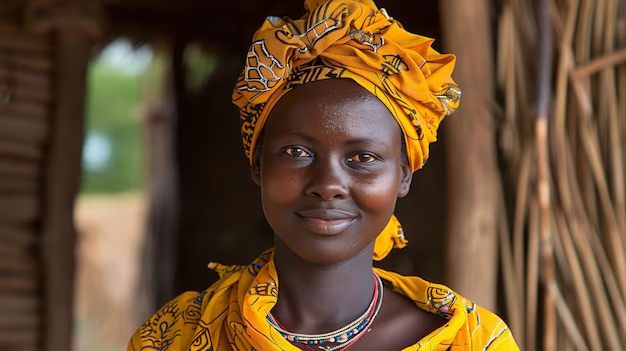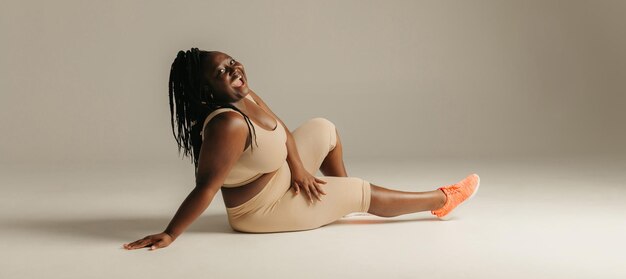It symbolizes cultural attention, digital trends, and identity shifts. At first glance, it may seem odd. However, beyond the title, there is a more profound meaning. This award honors extreme gluteal proportions in African women. It highlights natural diversity and body uniqueness. More importantly, it connects with self-expression in today’s digital age. This award starts a global conversation as technology shapes how we see bodies. It weaves together tradition, progress, and contemporary media in unexpected ways. Moreover, it invites us to rethink beauty and visibility. From viral content to genetic roots, the award bridges science and culture. It also reflects on digital platforms, where identity is often visual. The following sections will explore how this award connects personal pride and tech influence. It’s time to look past the surface and understand what it represents.

Introduction
The title “Unusual Award N.13” may sound strange at first. However, it carries deep cultural and digital meaning. This award honors the distinctive gluteal features of African women. But it’s more than just body admiration. It reflects changing ideas of beauty in a tech-driven world. Moreover, it connects natural identity with digital self-expression. As body image trends move online, this award sparks global attention. It shows how culture meets innovation in unexpected ways. Through social platforms, visual identity has gained new power. So, this award becomes a symbol of bold pride. At the same time, it questions traditional beauty standards. It invites discussion on heritage, genetics, and representation. Therefore, it’s not just an award—it’s a statement.
In this blog, we’ll explore its more profound impact. From media influence to personal identity, the conversation is just beginning.
What Is the “Unusual Award N.13”?
The “Unusual Award N.13” is more than a strange title. It showcases women with pronounced gluteal features, particularly within African communities, and has attracted widespread attention on social media and international platforms. At first glance, it may seem humorous or odd. However, its message runs much deeper than entertainment. It celebrates natural body diversity and cultural uniqueness in a digital space. With each post or photo, self-expression becomes a form of innovation. Moreover, this trend blends tradition with technology in surprising ways. In doing so, it reshapes how identity is seen and shared. The award also challenges common beauty ideals shaped by Western influence. Celebrating curvier bodies sparks pride in natural heritage. Today, visual platforms shape what’s considered “beautiful.” Therefore, this award represents more than a trend—it reflects personal and cultural identity.
What Is Steatopygia? (Scientific Explanation)
Steatopygia is a genetic trait marked by a notable accumulation of fat in the buttocks area. This trait is especially prevalent among women in certain African ethnic groups. Scientifically, it results from genetic adaptation to environmental and survival needs. In hot climates, this fat distribution helps conserve energy without overheating the body. Though natural, steatopygia often draws attention in today’s visual and digital culture. It plays a central role in the idea behind “Unusual Award N.13.” This award focuses on women with extreme gluteal proportions, often influenced by this condition. It doesn’t mock or shame—it celebrates rare beauty and body expression. Now, in a tech-driven age, physical traits gain global visibility online. Photos, videos, and reels create a powerful stage for cultural pride and body confidence. As a result, steatopygia is no longer a private biological fact. It’s a digital identity, merging science, culture, and individual voice. More importantly, it challenges traditional beauty standards shaped by Western norms. Through such platforms, women reclaim agency and self-worth in bold, visible ways.
Cultural & Historical Significance
Throughout African history, the female body has carried deep cultural and symbolic meaning. Steatopygia, in particular, was often seen as a sign of fertility and femininity. In tribes like the Khoisan, curvier figures were not just accepted—they were celebrated. Body shape reflected status, survival ability, and even spiritual beliefs in ancestral communities. This cultural admiration connects directly to Unusual Award N. 13 in the modern world. The award isn’t random—it reflects centuries of inherited beauty norms and social identity. Today, these once-local traits are amplified on global platforms through photos, reels, and articles. This creates a powerful crossover between cultural tradition and digital innovation. While Western media often promotes slim ideals, African heritage embraces fuller, natural proportions. And that contrast fuels the relevance of the award in modern beauty discourse. As society evolves, body image becomes a key part of online identity. Young African women can now express pride, heritage, and self-worth through digital visibility; Unusual Award No. 13 bridges ancient values with present-day empowerment. It allows women to own their image while challenging outdated beauty narratives worldwide. With each shared post or video, a deeper story unfolds—one rooted in ancestry. Technology now acts as a mirror, reflecting not just bodies but cultural essence too. In this way, tradition and tech no longer oppose each other—they grow side by side.

Evolutionary & Genetic Perspective
The concept of Unusual Award N.13 also invites us to explore human evolution. Extreme gluteal proportions, seen in some African women, are not random traits. They are rooted in genetics and shaped by natural selection over centuries. In early human societies, fat storage offered survival advantages in harsh environments. This trait, called steatopygia, helped regulate energy and support fertility during food scarcity. Over time, these body features became more prominent in certain populations, especially in Africa. In today’s digital era, such natural features are increasingly acknowledged and celebrated through various awards. Unusual Award N.13 becomes a lens through which to view evolution through modern storytelling and self-expression. It’s not just about beauty—it’s about identity, biology, and global awareness. With each viral image, science meets culture in new and expressive ways. Thus, technology celebrates what evolution has long preserved—a unique, empowering physical identity.
Controversies & Ethical Debates
Unusual Award N.13: Extreme Gluteal Proportions in African Women sparks intense global conversations. Although it emphasizes beauty and self-expression, it raises important ethical and cultural issues. Some argue this award objectifies rather than empowers. It turns a deeply cultural trait into a viral trend, often without proper context or respect. Others view it as celebrating natural African features in the digital space. Still, the line between appreciation and exploitation becomes blurry, especially on social media platforms. Moreover, technology amplifies these images without boundaries. It prompts discussions around digital consent, respect for cultural values, and the accountability of media platforms. Is this self-expression or a filtered narrative driven by likes and shares? Such concerns challenge the balance between innovation and ethical storytelling in today’s content world. As global audiences engage, the discussion expands beyond beauty to deeper identity issues. The award now symbolizes both recognition and controversy in the modern age. It reminds us that visibility must come with responsibility and respect for heritage and humanity.
Body Positivity & Modern Representation
Unusual Award N.13: Extreme Gluteal Proportions in African Women highlights evolving beauty standards. In today’s world, body diversity is gaining visibility through bold and unconventional platforms. The award confronts limited beauty standards and proudly celebrates African heritage. It promotes body positivity by celebrating natural curves without apology or shame. In the digital age, such representation inspires confidence and self-expression. Social media allows diverse bodies to be seen, shared, and appreciated globally. However, this recognition also shapes how technology influences identity. Visual trends often define what is acceptable or desirable in public spaces. That’s why ethical portrayal becomes so important. Representation must empower, not stereotype or tokenize. Furthermore, the award highlights the value of authenticity and amplifies the voices of those frequently overlooked in mainstream stories. Blending tradition with modern influence opens doors for inclusive storytelling. As a result, body positivity evolves into a movement that thrives both socially and in digital spaces.

Health, Mobility & Biomechanics
Unusual Award N.13: Extreme Gluteal Proportions in African Women raises essential health considerations. While celebrating natural features, it’s vital to understand the physical impact and biomechanical changes. Larger gluteal proportions may affect posture, gait, and spinal alignment. However, traditional lifestyles have adapted to these traits over generations. Modern science now explores how body shape influences movement and joint health. Through advanced biomechanics, researchers examine load balance and muscle engagement. In the digital age, this knowledge enhances medical understanding and wearable tech development. From fitness apps to AI-based diagnostics, tech evolves with diverse body needs. Thus, this award bridges biology, innovation, and self-expression. It also highlights how identity and physical form guide future healthcare and technology.

Why This Award Matters Today
The Unusual Award N.13: Extreme Gluteal Proportions in African Women reflects more than physical traits. It reflects the intersection of culture, technology, and personal identity within our ever-changing digital world. In today’s world, self-expression is amplified through social media and virtual platforms. This award celebrates that shift, offering recognition beyond conventional beauty standards. It also prompts vital discussions on identity, representation, and cultural respect in global dialogues.
Meanwhile, tech industries respond by designing inclusive tools that cater to diverse body profiles. From smart fashion to health-monitoring apps, innovation is adapting to reflect real-world bodies. Therefore, this award is not just symbolic—it helps guide modern design and cultural values. Ultimately, it bridges biology, media, and personal pride, centralizing diversity in shaping our future.

Conclusion
The Unusual Award N.13: Extreme Gluteal Proportions in African Women goes beyond mere recognition. It highlights the beauty of difference and the power of self-definition in today’s digital age. Honoring unique body traits challenges stereotypes and expands global beauty standards. At the same time, it connects personal identity with broader themes like technology and innovation. Through this lens, we see how culture and science can influence design, health, and media. This award opens space for respectful dialogue around history, genetics, and self-expression. It inspires industries to become more inclusive and responsive to real human diversity. More importantly, it empowers individuals to take pride in their natural form and cultural story. In conclusion, it’s not just an award—it’s a reflection of how we see ourselves evolving.